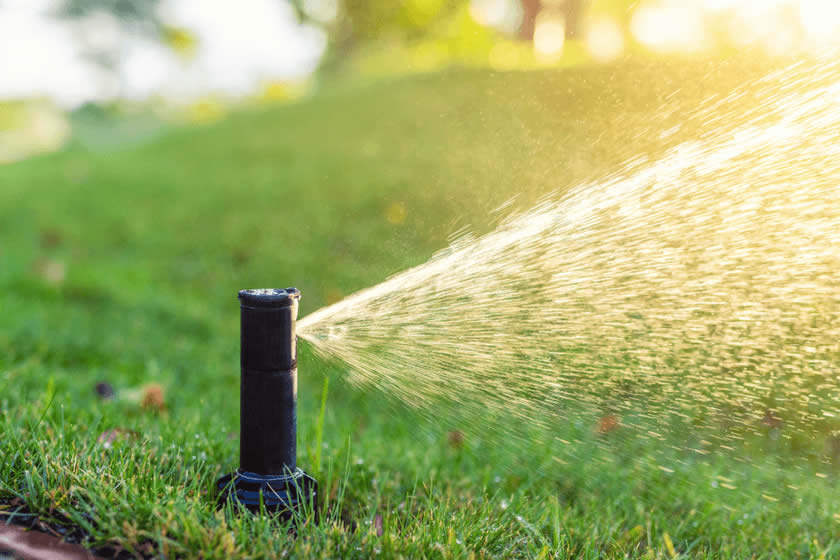
info@IndustrialServiceandSupply.com

337-363-1817

Monday - Saturday: 6:30 - 5:30
info@IndustrialServiceandSupply.com
337-363-1817
Monday - Saturday: 6:30 - 5:30

16 May, 2022
Do It Yourself TipsTo continue working efficiently and effectively, irrigation systems require regular maintenance. When you take the time to maintain your system, you may be able to save water. It’s also something that you can mainly do yourself. Here’s how.
To maintain your irrigation system, be sure to:
Irrigation parts have a life span. While your irrigation equipment won’t last forever, you can extend its life with irrigation system maintenance. Check your irrigation areas for wet and dry spots. Make sure that the pump system is working properly and confirm that your system’s central controller is programmed accurately.
Calibrate your sprinkler system to assess the amount of water that your system is using during a specific time period. Often, people overwater or underwater their grass without being aware of it. Calibration is easy. It just includes a few steps.
Once you’ve determined your sprinkler system’s irrigation rate, you’ll be able to water more efficiently. For instance, if you have a sprinkler system with an irrigation rate of 2 inches for every hour, which is one-half inch for every 15 minutes, and your grass requires around three-quarters of an inch of water, then you’d want to operate your system for 23 minutes.
Sprinkler system maintenance includes cleaning and adjusting sprinkler heads. Pick a time each month to inspect your system. Clean sprinkler heads that are obstructed or blocked. If you notice that there is a head that is sending water onto a car or a tree, then adjust the head to deliver water to the areas that need it.
Watch for sprinkler runoff areas. If one part of your outdoor space is receiving too much water or you have a head that’s sending water onto your driveway, adjust the heads. Keep in mind that sprinkler runoff wastes water. Runoff can also pollute your area’s storm drains.
Make sure that your sprinklers are not sending out high-pressure mist. When this happens, the water transitions into mini water droplets that the wind carries away. Mist can also result in a cloud instead of watering an area that needs it. To resolve this issue, install a pressure device that regulates water pressure.
When should you lubricate your sprinkler heads? Sprinkler system maintenance requires sprinkler head lubrication from time to time. Lubricate a head if you attempt to press it down while the water is on, and it won’t budge. Use spray lubricant.
Be generous with the lubricant. Spray the substance around the head’s shaft. Then, give it time to soak in. Press and pull the sprinkler head to loosen the moving parts. Turn the water on and make sure that it’s operating properly.
To save money and decrease landfill waste, consider hose repair for your garden hoses. A hose repair kit will include the parts that you need for a more extensive repair. If you notice a small hole in your garden hose, then seal it with electrical tape. This type of tape features the elasticity, weather resistance and insulation that you need to mend your hose.
If you have a big tear in your garden hose, then a hose repair kit is the way to go. A kit will include a metal or a plastic tube that you can use to replace the hose’s damaged section.
If you need hose repair because there is a leak in the coupling, then purchase a new hose gasket. This part of a garden hose will wear out due to time and exposure to water. You can expect to change the gaskets in a garden hose every three to 10 years.
Consider checking for wet or dry areas about once a week. Check where your sprinkler heads are sending water to about once a month.
The benefits of regular irrigation system maintenance include determining when you need sprinkler system repair right away. If you are unaware that you need sprinkler repair, then you may waste water or wind up with a more expensive repair.
Maintenance will ensure that your system is working efficiently and that you aren’t wasting water. You’ll also be able to lubricate your system’s heads as needed.
You may need an irrigation system specialist for irrigation repair depending on the extensiveness of the repair. Also, consider hiring a contractor to complete an assessment of your system once or twice when summer arrives. A professional inspector will make sure that everything is working properly with your sprinkler or irrigation system.
Irrigation systems are affordable to maintain. If you’re doing most of it yourself, you can probably maintain it for the cost of sprinkler head lubricant, additional sprinkler heads and a bit of your time.
If you don’t have the time to maintain your system or are just worried that you’ll miss something important, then you can hire a professional company to take care of it for you. The cost for this ranges from around $55 to $85.
Irrigation system maintenance will keep your system working well. It will decrease expensive repairs, and it may even reduce your water bills. For help or to purchase parts, find a True Value store near you.